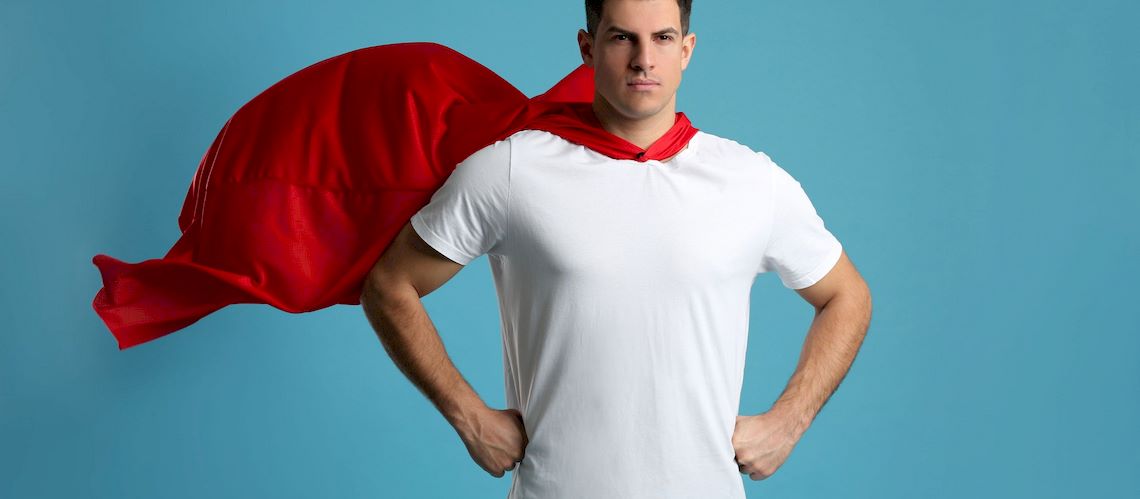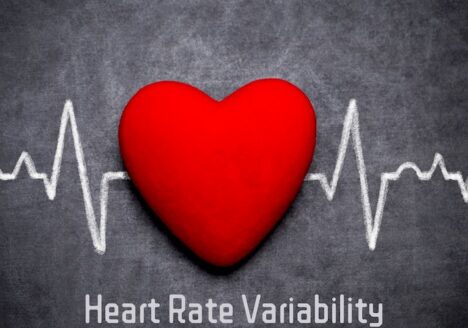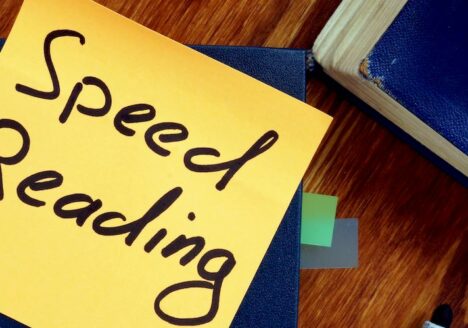Power poses, introduced by Carney, Cuddy, and Yap (2010), are expansive body postures that purportedly elicit psychological and physiological changes. These include increased feelings of power, heightened confidence, and potential hormonal shifts, such as elevated testosterone and reduced cortisol. Despite initial enthusiasm, the concept has sparked debate and nuanced research within the psychological community. This article situates power poses within the Self Matrix, examining their scientific validity, contextual factors, and practical applications.
Definition
Power poses are open, expansive postures that enhance confidence and mental resilience. The Self Matrix conceptualizes them as a tool for influencing the interconnected dimensions of physical and mental well-being. While initial studies linked power poses to significant hormonal and behavioral changes (Carney et al., 2010), subsequent research, including Ranehill et al. (2015), questioned these effects. Psychological benefits, such as increased feelings of power, remain better supported, confirming power poses as a powerful tool through which the body can affect the mind (Cuddy et al., 2018).
Historical and Philosophical Foundations
The interplay between the physical body and mental states has ancient philosophical roots. Aristotle’s works, such as De Anima and Nicomachean Ethics, discuss the alignment of body and mind in achieving eudaimonia, or human flourishing (Lawson-Tancred, 1986; Ross & Brown, 2009). Although not directly related to power poses, these insights highlight the broader principle that physical stances influence emotional and cognitive states, a core element of the Self Matrix.
Principles and Evidence
1. Psychological Outcomes
Research supports the idea that power poses can enhance feelings of confidence and self-assurance. Cuddy et al. (2018) conducted a p-curve analysis affirming the evidential value of postural feedback for self-perceived power, although the magnitude of the effects remains debated.
2. Hormonal Controversy
The original findings by Carney et al. (2010) suggested significant hormonal shifts associated with power poses. However, replication studies like Ranehill et al. (2015) and Simmons and Simonsohn (2017) found no robust evidence of such effects, emphasizing the need for cautious interpretation.
3. Contextual and Individual Factors
Social context and individual differences significantly influence power posing outcomes. Garrison et al. (2016) showed that social interactions moderate the effects, while Körner and Schütz (2020) noted that body posture outcomes often intertwine with social roles and perceived dominance.
4. Physiological Mechanisms
Expansive postures may influence autonomic nervous system activity, potentially reducing stress (Laborde et al., 2019). Further supporting this, Muehlhan et al. (2014) found that body posture influences cognitive performance, which may be linked to changes in autonomic regulation. This aligns with the notion that expansive postures can reduce stress and enhance cognitive function. Peper et al. (2017) demonstrated that posture also significantly impacts memory recall and mood, further supporting the role of expansive postures in influencing cognitive and emotional states. However, the lack of consistent hormonal evidence suggests that psychological mechanisms, such as self-perception and social signaling, play a more central role.
The influence of body posture on communication and cognition has been extensively studied. Mehrabian (1982) emphasized that nonverbal cues, such as body language, significantly impact interpersonal interactions, suggesting that adopting certain postures can alter others’ perceptions and our self-perception. Additionally, Muehlhan et al. (2014) investigated how different body postures affect cognitive performance, indicating that physical stance can modulate mental processes.
Benefits
1. Confidence Boost
Power poses can enhance self-perception and assertiveness, making them a valuable tool for high-pressure scenarios like interviews and public speaking (Cuddy et al., 2015).
2. Emotional Regulation
In therapeutic contexts, power poses have been explored as interventions to improve mood and emotional awareness, particularly for individuals with body image challenges (Weineck et al., 2020). Similarly, Peper et al. (2017) explored the effects of posture on emotional states, suggesting that adopting expansive postures can positively influence mood and self-awareness.
3. Academic and Professional Engagement
In educational settings, brief power posing exercises can increase participation and confidence in discussions, as demonstrated by Schipper (2018).
Applications in the Self Matrix
1. Personal Development
Incorporate power poses into daily routines to cultivate confidence before challenging tasks. Combine with mindfulness or diaphragmatic breathing for synergistic effects.
2. Professional Contexts
Encourage power posing as part of workplace wellness programs. Highlight its potential for nonverbal presence during job interviews or public speaking (Cuddy et al., 2015).
3. Therapeutic Interventions
Explore power poses in clinical settings to enhance self-esteem, body awareness, and emotional resilience, particularly for individuals with anxiety or body image concerns (Davis et al., 2017; Weineck et al., 2020).
To further illustrate the practical use of power poses, here are examples of specific postures that can be easily incorporated into daily routines.
Practicing Power Poses – Key Postures for Confidence and Resilience
Power poses, as tools for influencing the mind through the body, are simple to implement and require no equipment or preparation. Below are examples of effective power poses that can help foster feelings of confidence, resilience, and mental clarity. Practicing these postures for just two minutes can yield psychological benefits, making them a practical addition to routines or high-stakes moments.
1. The Wonder Woman Pose
- Description: Stand tall with feet hip-width apart, hands firmly placed on your hips, chest lifted, and chin slightly raised.
- Psychological Benefit: Promotes strength and confidence, ideal for preparation before meetings or challenges.
2. The Victory Pose
- Description: Stand or sit with arms stretched upward in a V shape, chest open, and head slightly tilted back.
- Psychological Benefit: Associated with feelings of triumph and empowerment, making it useful for overcoming self-doubt.
3. The CEO Pose
- Description: Sit in a relaxed position with your legs slightly apart, arms draped confidently over armrests, and fingers interlaced behind your head or resting in front.
- Psychological Benefit: Exudes authority and control, particularly helpful in situations requiring composure and nonverbal presence.
4. The Starfish Pose
- Description: Stand with your arms and legs spread wide in an expansive starfish shape, occupying as much space as possible.
- Psychological Benefit: Reinforces feelings of dominance and expansiveness, perfect for moments needing assertiveness.
5. The Expansive Lean
- Description: Lean back with arms stretched out across a desk or table, feet firmly planted and slightly apart.
- Psychological Benefit: Projects calm assertiveness and is beneficial in preparation for negotiations or presentations.
While these poses offer practical benefits, ongoing research continues to explore the underlying mechanisms and broader implications of their effects.
Scientific Debate and Future Directions
While early studies highlighted dramatic physiological and psychological changes from power posing, more recent research emphasizes nuanced effects moderated by context and individual differences (Ranehill et al., 2015; Körner & Schütz, 2020). Future research should explore the interaction between posture, perceived social status, and cultural factors to fully understand their impact.
Conclusion
Power poses offer a compelling, if contested, approach to enhancing confidence and emotional well-being. Within the Self Matrix, they exemplify the bidirectional relationship between physical and mental states. While their effects may depend on social and individual factors, power poses remain a simple, accessible modality for fostering resilience and self-assurance. Future research will continue to refine our understanding of their mechanisms and applications, ensuring their alignment with evidence-based practices.
References
Carney, D.R., Cuddy, A.J.C. and Yap, A.J. (2010). Power posing: brief nonverbal displays affect neuroendocrine levels and risk tolerance. Psychological Science, 21(10), pp. 1363–1368.
Cuddy, A.J.C., Schultz, S.J. and Fosse, N.E. (2018). P-curving a more comprehensive body of research on postural feedback reveals clear evidential value for power-posing effects: Reply to Simmons and Simonsohn (2017). Psychological Science, 29(4), pp. 656–666.
Cuddy, A.J.C. (2015). Presence: bringing your boldest self to your biggest challenges. Retail ed., unabridged. New York: Hachette Audio.
Davis, M.L., Papini, S., Rosenfield, D., Roelofs, K., Kolb, S., Powers, M.B. and Smits, J.A.J. (2017). A randomized controlled study of power posing before public speaking exposure for social anxiety disorder: no evidence for augmentative effects. Journal of Anxiety Disorders, 52, pp. 1–7.
Garrison, K.E., Tang, D. and Schmeichel, B.J. (2016). Embodying power: A preregistered replication and extension of the power pose effect. Social Psychological and Personality Science, 7(7), pp. 623–630.
Körner, R. and Schütz, A. (2020). Dominance or prestige: A review of the effects of power poses and other body postures. Social and Personality Psychology Compass, 14(8), e12559.
Laborde, S., Strack, N. and Mosley, E. (2019). The influence of power posing on cardiac vagal activity. Acta Psychologica, 199, p. 102899.
Lawson-Tancred, H. (ed.) (1986). De anima (on the soul). Penguin classics. Harmondsworth: Penguin Books.
Mehrabian, A. (1982). Nonverbal communication. New York: Aldine Publishing.
Muehlhan, M., Marxen, M., Landsiedel, J., Maluck, E., Wintermann, G.B. and Voss, A. (2014). The effect of body posture on cognitive performance: a question of sleep quality. Frontiers in Human Neuroscience, 8, p. 171.
Peper, E., Lin, I.M., Harvey, R. and Perez, J. (2017). How posture affects memory recall and mood. Biofeedback, 45(2), pp. 36–41.
Ranehill, E., Dreber, A., Johannesson, M., Leiberg, S., Sul, S. and Weber, R.A. (2015). Assessing the robustness of power posing: no effect on hormones and risk tolerance in a large sample of men and women. Psychological Science, 26(5), pp. 653–656.
Ross, W.D. and Brown, L. (2009). The Nicomachean ethics. Oxford world’s classics. ed. rev. Oxford: Oxford University Press.
Schipper, S. (2018). Power posing for increased participation in the EFL classroom. The Language Teacher, 42(6), pp. 9–11.
Simmons, J.P. and Simonsohn, U. (2017). Power posing: p-curving the evidence. Psychological Science, 28(5), pp. 687–693.
Weineck, F., Messner, M., Hauke, G. and Pollatos, O. (2020). Improving interoceptive ability through the practice of power posing: a pilot study. PLOS ONE, 15(2), p. e0228820.




